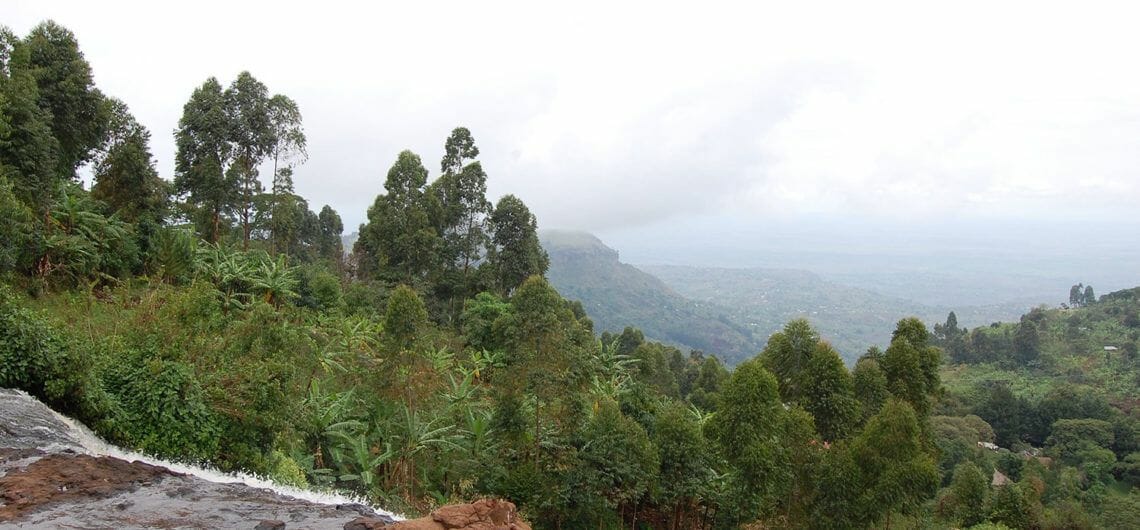
Mt Elgon is a massive, solitary volcanic mountain on the border of Eastern Uganda and Western Kenya. It spans eighty kilometres in diameter and rises 307m above the surrounding plains, providing a welcome relief in more than one way. Its mountainous terrain introduces variety to an otherwise flat regional landscape, it’s cool heights offer respite for humans from the hot plains below and its higher altitudes provide a refuge for flora and fauna.
Mount Elgon has been a regional landmark for a long time: this extinct volcano is one of Uganda’s oldest physical features, first erupting around 20 million years ago. It was once Africa’s highest mountain, towering above Kilimanjaro’s 5895 m. Millennia of erosion have reduced its height to 4321 m, relegating it to the 4th highest peak in East Africa (and 7th on the continent). However, its 4000 km² surface area is still the largest base of any volcanic mountain worldwide.
The scenery of this area includes waterfalls, gorges, mesas, cliffs, caves, calderas, hot springs and mountain peaks.
The most popular areas around Mt. Elgon are the vast caves where frequent night visitors such as elephants, bush-pigs and buffalo come to lick the natural salt found on the cave walls. There are ancient cave paintings near the trailhead at Budadiri, the 48 C hot springs in the former volcano’s crater, and Sipi Falls at the foot of Mt. Elgon. Sipi Falls is also known for being the home of some of Uganda’s best arabica coffee.
Species diversity:
Elgon’s slopes support a rich variety of vegetation that ranges from mountain forest to high open moorland, studded with giant lobelia and groundsel plants. There are 42 species of mammals, ranging from elephants, leopards, buffalo, bush pigs and monkeys to a variety of small antelope. The 312 bird species include the black-collared apalis, green tinkerbird, Jackson’s francolin, Verreaux’s eagle, black-collared apalis and the endangered lammergeyer.
Mount Elgon is a hugely important water catchment area; its forests receive up to 3000 mm of rain each year, which they store and release to support flora, fauna and more than a million Ugandans. Elgon’s water is equally important to many Kenyans, for Mount Elgon is bisected by the international boundary. The mountain’s natural vegetation, and its role as a giant biological sponge, is protected by the Mount Elgon National Park on both sides of the border.
Size and accessibility:
Established in 1992, the park covers an area of 1145 m². The nearest town is Mbale which is 28 km to the trailhead of Budadiri, while, if you have to travel from Kampala, it is 314 km away. There are no roads in the park, and all activities are done on foot. No game drives!
By Car:
To drive from Kampala to the Mt. Elgon takes about 7 hours.
By Air:
You can book a charter flight to Mbale and drive to the park entrance.
Activities:
Mountain hiking
Primate and bird watching
Cave explorations
Contact Us
We respond to all inquiries within 2 business days.
"*" indicates required fields